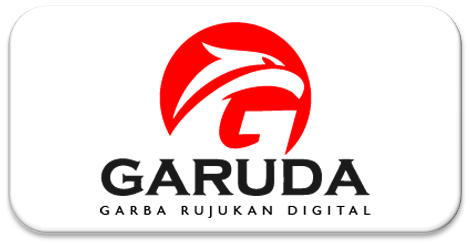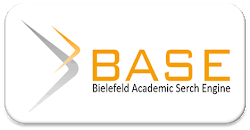Islam dan Budaya Masyarakat Gayo, Provinsi Aceh: Kajian Sejarah dan Sosial
DOI:
https://doi.org/10.22373/jsai.v1i1.482Keywords:
Islam, Culture, UlamaAbstract
This article argues that Gayonese community practice Islam through the culture and less concern with religious texts. Although the wave of islamization since the colonial time and post-independence was high, the process does not succeed in introducing what the local scholars called as Islamic tradition. Such situation forces the following ulama to defend culture by finding justification for every practice instead of abolishing it. There are two factors leading to the situation. First, ulama of colonial and post-colonial time did not succeed in finding what they called as Islamic tradition replacing the existing tradition. second, lacking of regeneration of reformer Ulama that drive the living reformer ulama to support culture by inserting Islamic values and norms into the culture. This effort is crucial as the Gayonese refers more to the culture than the religious texts. This Article historically studies the development of Islam in Gayonese community. It frames its historical analysis from the Dutch colonial period to post independence of Indonesia Republic. It generally observes the impact of islamization in the past to the current situation. This article brings back the fundamental question in socio-anthropological studies about Islam that why do Muslim who refer to same source of text understand and practice Islam in widely various expression. The question is applied to this research exploring the development of Islam in Gayonese community inhabiting Central Aceh and Bener Meriah District. Thus, this research questions how did Islam develop in colonial time and its impact to the local culture? did there a debate about religion and culture take place during the colonial time and post-independence of Indonesia? How does the past event affect the current practice of Islam in Gayonese community? the questions are explored historically by collecting relevant literatures and collective memory of the local people. The collective memory data were collected from 2015 to 2019.
References
Abbas, Syahrizal, dan Syamsul Rijal. Dimensi pemikiran hukum dalam implementasi syariat Islam di Aceh. Banda Aceh: Dinas Syariat Islam di Aceh, 2007.
Abbas, Syahrizal, Syamsul Rijal, dan Bustami Abubakar. “Respon Masyarakat Bireun Terhadap Hukuman Cambuk.” Dalam Dimensi pemikiran hukum dalam implementasi syariat Islam di Aceh. Banda Aceh: Dinas Syariat Islam di Aceh, 2007.
Abdullah, Taufik. “Schools and Politics: The ‘Kaum Muda’ Movement in West Sumatra (1927-1933).” Cornell University, 1970. http://search.proquest.com/docview/302519029/.
Abubakar, Al Yasa’. Metode Istislahiah: Pemamfaatan Ilmu Pengetahuan dalam Ushul Fiqh. Jakarta: Prenadamedia Group, 2016.
———. Penerapan Syariat Islam di Aceh: Upaya Penyusunan Fiqih dalam Negara Bangsa. Banda Aceh: Dinas Syariat Islam, 2008.
Abubakar, Al Yasa’. “Syari’at Islam dan Budaya Aceh Pedalaman - Lintas Gayo,” 2012. http://www.lintasgayo.com/28428/syariat-islam-dan-budaya-aceh-pedalaman.html.
Aceh Tengah, Pemda, dan PT. BPD Aceh Cabang Aceh Tengah. “Arsip Tanah Budi Luhur Takengon,” 2009.
Afrianty, Dina. “Local Women’s NGOs and the Reform of Islamic Law in Aceh: The Case of MISPI.” Dalam Islam and the Limits of the State: Reconfigurations of Practice, Community and Authority in Contemporary Aceh, disunting oleh David Kloos, Annemarie Samuels, dan R. Michael Feener. Leiden: BRILL, 2015.
Amal, Taufik Adnan. Politik syariat Islam: dari Indonesia hingga Nigeria. Cet. 1.. Jakarta: Pustaka Alvabet, 2004.
Aspinall, Edward. “From Islamism to nationalism in Aceh, Indonesia.” Nations and Nationalism 13, no. 2 (2007): 245–263. doi:10.1111/j.1469-8129.2007.00277.x.
Bälz, Kilian. “Shari‘a and Qanun in Egyptian Law: A Systems Theory Approach to Legal Pluralism.” Yearbook of Islamic and Middle Eastern Law Online 2, no. 1 (1995): 37–53. doi:10.1163/221129896X00037.
Benda-Beckmann, Franz Von, dan Keebet Von Benda-Beckmann. “Decentralisation, the transformation of the nagari and the dynamics of legal pluralism.” Cambridge: Cambridge University Press, 2013.
Berger, Maurits S. “The Shari’a and Legal Pluralism: The Example of Syria.” Dalam Legal Pluralism in the Arab World, disunting oleh Baudouin Dupret, M. S. Berger, dan Laila Al- Zwaini. Arab and Islamic Laws Series ; Vol. 18. 07926929X. The Hague [etc.]: Kluwer Law International, 1999.
Bowen, John R. “A Modernist Muslim Poetic: Irony and Social Critique in Gayo Islamic Verse.” The Journal of Asian Studies 52, no. 3 (1993): 629–646. doi:10.2307/2058857.
———. Muslims through Discourse: Religion and Ritual in Gayo Society. Princeton, N.J.: Princeton University Press, 1993.
———. Sumatran Politics and Poetics: Gayo History, 1900-1989. New Haven, Conn, etc: Yale University Press, 1991.
———. “The History and Structure of Gayo Society: Variation and Change in the Highland of Aceh.” ProQuest Dissertations Publishing, 1984. http://search.proquest.com/docview/252106428/.
Dardanila, Dardanila. “Leksikostatistik Bahasa Karo dan Bahasa Gayo.” Dalam Talenta Conference Series: Local Wisdom, Social, and Arts (LWSA), 1:185–191, 2018.
Dyen, Isidore. A Lexicostatistical Classification of the Austronesian Languages. Memoir of International Journal of American Linguistics; Memoir 19 851547273. Baltimore, Md.: Waverly Press, 1965.
Elam, Yigal, dan Noa Gedi. “Collective Memory - What Is It?” History and Memory 8, no. 1 (1 April 1996): 30–50.
Feener, R. Michael. Shariʿa and Social Engineering: The Implementation of Islamic Law in Contemporary Aceh, Indonesia. Oxford Islamic Legal Studies 375521917. Oxford; New York: Oxford University Press, 2013.
Husaini, Husda. “Sejarah Pemberlakuan Syari’at Islam Di Provinsi Nanggroe Aceh Darussalam.” Dalam Syariat Islam Di Nanggroe Aceh Darussalam, disunting oleh Fauzi Ismail dan Arifin M. Zain. Banda Aceh: Dinas Syariat Islam Provinsi Aceh, 2007.
Ibrahim, Mahmud. “Ulama Aceh Tengah Menunjang Pembangunan: Kajian Dewan Paripurna Ulama Bersama Majelis Permusyawaratan Ulama Kabupaten Aceh Tengah Tahun 2004 s/d 2012.” Unpublished, 2013.
Ibrahim, Mahmud, dan A.R Hakim Aman Pinan. Syari’at dan Adat Istiadat. 1 ed. Vol. 1. Takengon: Yayasan Maqamammahmuda, 2002.
———. Syari’at dan Adat Istiadat. 1 ed. Vol. 3. Takengon: Yayasan Maqamammahmuda, 2005.
———. Syari’at dan Adat Istiadat. 4 ed. Vol. 2. Takengon: Yayasan Maqamammahmuda, 2010.
Jedlowski, Paolo. “Memory and Sociology: Theme and Issues.” Time and Society 10, no. 1 (2001): 29–40.
Jones, Russell. Hikayat Raja Pasai. Karya agung 303741295. Kuala Lumpur: Yayasan Karyawan: Fajar Bakti, 1999.
Kamsin, Kamsin. “Rancangan kawasan pusat seni budaya Gayo di Kabupaten Gayo Lues Propinsi Aceh.” PhD Thesis, Universitas Islam Negeri Maulana Malik Ibrahim, 2014.
Kloos, David. Becoming Better Muslims: Religious Authority and Ethical Improvement in Aceh, Indonesia. Princeton Studies in Muslim Politics. Princeton, New Jersey: Princeton University Press, 2018.
———. “In the Name of Syariah? Vigilante Violence, Territoriality, and Moral Authority in Aceh, Indonesia.” Indonesia, no. 98 (1 Oktober 2014): 59–90. doi:10.5728/indonesia.98.0059.
Lintasgayo.co. “Berkunjung ke Situs Loyang Mendale, Dr. Ketut Jelaskan Objek Penelitian ke Pak Nas.” Media Online Dataran Tinggi GAYO | lintasgayo.co, 27 Maret 2017. http://lintasgayo.co/2017/03/27/berkunjung-ke-situs-loyang-mendale-dr-ketut-jelaskan-objek-penelitian-ke-pak-nas.
lintasgayo.co. “Fakta di Ceruk Mendale (Seharusnya) Mengakhiri Polemik Uken-Toa.” News. Media Online Dataran Tinggi GAYO | lintasgayo.co, 28 Juni 2015. http://lintasgayo.co/2015/06/28/fakta-di-ceruk-mendale-seharusnya-mengakhiri-polemik-uken-toa.
———. “Politik Uken-Toa Muncul di Akar Rumput, Bukan di Perdu!” News. Media Online Dataran Tinggi GAYO | lintasgayo.co, 9 Januari 2015. http://lintasgayo.co/2015/09/11/politik-uken-toa-muncul-di-akar-rumput-bukan-di-perdu.
Melalatoa, M. J. Kebudayaan Gayo. Jakarta: Balai Pustaka, 1982.
Naṣr, Ḥusayn. Ideals and Realities of Islam. London [etc.]: Aquarian, 1994.
———. The Heart of Islam: Enduring Values for Humanity. San Francisco, CA: HarperSanFrancisco, 2002.
nurdin. “Provinsi Aceh Terdiri Dari 23 Kabupaten, 13 Suku Dan Memiliki 11 Bahasa.” Balai Pelestarian Cagar Budaya Banda Aceh, 30 Oktober 2019. https://kebudayaan.kemdikbud.go.id/bpcbaceh/provinsi-aceh-terdiri-dari-23-kabupaten-13-suku-dan-memiliki-11-bahasa-daerah/.
Nurdin, Abidin, Samsul Bahri, dan Nanggroe Aceh Darussalam (NAD). Dinas Syariat Islam. Syariat Islam dan isu-isu kontemporer. Ed. 1.. Banda Aceh: Dinas Syariat Islam Aceh, 2011.
PaEni, Mukhlis. Riak di laut tawar: kelanjutan tradisi dalam perubahan sosial di Gayo-Aceh Tengah. Cet. 1.. Jakarta: Arsip Nasional Republik Indonesia, 2003.
Pinan, A.R Hakim Aman. “Pelestarian Budaya Tradisional Masyarakat Pendukungnya.” Unpublished, 1997.
———. Pesona Tanoh Gayo. Disunting oleh Nasaruddin dan Aqli H. Takengon: Pemerintah Kabupaten Aceh Tengah, 2003.
Rismawati, Rismawati. “Tingkat Keterancaman dan Kepunahan Bahasa Gayo.” Metamorfosa Journal 4, no. 2 (2016).
Salihin, Ansar, Sulaiman Juned, dan Dharsono Dharsono. “Motif ukiran Kerawang Gayo pada Rumah Adat Gayo di Kabupaten Aceh Tengah Provinsi Aceh.” Gorga Jurnal Seni Rupa 8, no. 1 (2019): 68–79.
Salim, Arskal. “Dynamic Legal Pluralism in Indonesia: Contested Legal Orders in Contemporary Aceh.” The Journal of Legal Pluralism and Unofficial Law 42, no. 61 (1 Januari 2010): 1–29. doi:10.1080/07329113.2010.10756640.
Snouck Hurgronje, C. Tanah Gayo dan penduduknya. Seri INIS; XXV. Jakarta: INIS, 1996.
Srimulyani, Eka. “Islam, Adat, and the State: Matrifocality in Aceh Revisited.” Al-Jami’ah : Journal of Islamic Studies 48, no. 2 (2010): 321–342. doi:10.14421/ajis.2010.482.321-342.
Surip, Muhammad, dan Dwi Widayati. “Kekerabatan Bahasa Jawa dan Gayo: Kajian Linguistik Historis Komparatif.” Jurnal Bahasa Lingua Scientia 11, no. 1 (2019): 1–26.
Syukri. Sarakopat: sistem pemerintahan Tanah Gayo dan relevansi terhadap pelaksanaan otonomi daerah. Jakarta: Hijri Pustaka Utama, 2006.
Syukri, Syukri. “Budaya Sumang dan Implementasinya terhadap Restorasi Karakter Masyarakat Gayo di Aceh.” MIQOT: Jurnal Ilmu-ilmu Keislaman 41, no. 2 (2018): 406–27.
Vollenhoven, C. van. Van Vollenhoven on Indonesian Adat Law: Selections from Het Adatrecht van Nederlandsch-Indië (Volume I, 1918; Volume II, 1931). Disunting oleh J. F. Holleman. Diterjemahkan oleh J. F. Holleman, Rachel Kalis, dan Kenneth Maddock. Translation Series ; 20. 830293302. The Hague: Nijhoff, 1981.
Wiradnyana, Ketut. Gayo merangkai identitas. Ed. 1.. Jakarta: Yayasan Pustaka Obor Indonesia, 2011.
Downloads
Published
How to Cite
Issue
Section
License
- Authors retain copyright and grant the journal right of first publication with the work simultaneously licensed under an Attribution-NonCommercial-ShareAlike 4.0 International (CC BY-NC-SA 4.0) that allows others to share the work with an acknowledgment of the work's authorship and initial publication in this journal.
- Authors are able to enter into separate, additional contractual arrangements for the non-exclusive distribution of the journal's published version of the work (e.g., post it to an institutional repository or publish it in a book), with an acknowledgment of its initial publication in this journal.
- Authors are permitted and encouraged to post their work online (e.g., in institutional repositories or on their website) prior to and during the submission process, as it can lead to productive exchanges, as well as earlier and greater citation of published work.













